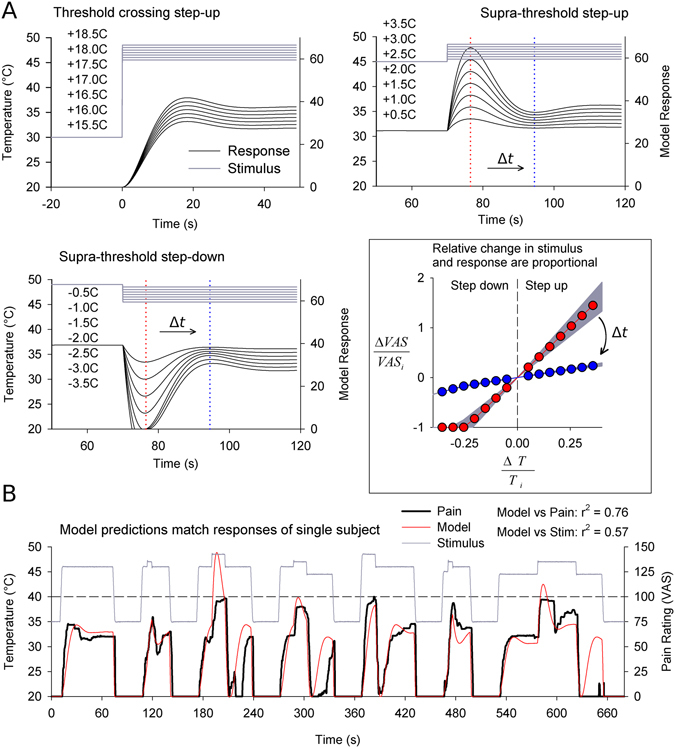Figure 2.

Model exploration suggests ideal stimulus parameters to resolve painful TCE. (A) The model step-response was explored outside the training space, and three different types of step responses were identified. Responses to threshold crossing steps peak at ~15 s while steps from supra-threshold ‘holding’ stimuli (T i) peak after ~7.5 s. Oscillations follow which stabilize after 45 s. Finally, positive and negative supra-threshold steps show symmetric responses. For supra-threshold steps, relative change in pain is proportional to relative change in stimulus with a time and T i dependent proportionality constant (insert; color coordinated slopes are plotted for two time points marked on supra-threshold step response plots; shadows illustrate T i ∈ [45 °C, 49 °C], T i = 47 °C featured). Response dynamics are approximately invariant with T i and representative step-response functions are shown. (B) Model predictions were qualitatively evaluated in a single subject using a variety of threshold crossing and supra-threshold steps. Results confirm presence of nonlinear damped oscillations in all three types of step-responses, confirms dependence of nonlinearity amplitude on step size, and that 2.5 °C steps transiently abolish pain (epochs 3–5, 7).
